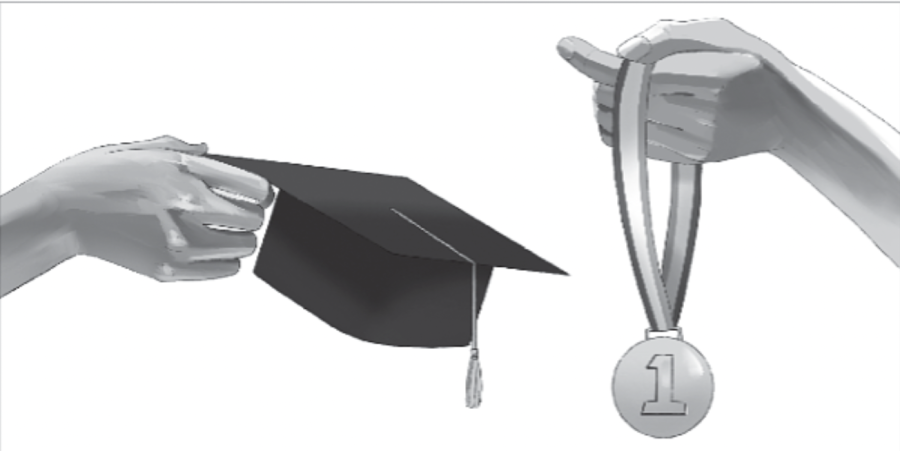Hillary Studdert, a 2023 Stanford University track and field commit, will soon sit down and sign onto the team officially. After over a year of back-and-forth emails and social media communication, Studdert will soon become a part of the 2027 Stanford graduating class.
Everyone’s journey to post-secondary education can be stressful and different. From athletics to academics, many students recognize that the college recruitment process is both a business and a huge decision.
“Sometimes, it feels like coaches forget they are talking to a 17-year-old making a huge decision,” senior Hillary Studdert, a 2023 Stanford University track and field commit, said. “Neither party, the coaches or the recruits, want to get left with nothing at the end of the process, so it can get tense at times.”
This process is known to be complicated, and there are college counselors who focus on guiding students through their recruitment. Katie Anderson is a college counselor for student-athletes who hope to continue playing their sport in college, and she said the recruitment process begins with a student-led discussion.
“I highly recommend that student-athletes start asking the questions or at least having conversations with their families at least midway through their sophomore year,” Anderson said.
Because of the NCAA division rules for contact, timing is key in the process.
“Coaches can start talking to their prospective recruits on June 15, between their sophomore and junior year … and that’s not all sports, but that’s most sports,” Anderson said. “So that’s why you want to start having a conversation with your parents and college counselor in that second semester of your sophomore year.”
Studdert said she began the recruitment process by contacting coaches.
“I began my recruiting process late in the summer of sophomore year and beginning of junior year by reaching out to schools and getting in contact with coaches,” Studdert said.“I sent emails to a lot of schools I was interested in and from there set up initial phone calls and meetings with coaches.”
Senior Julian Galindo, a 2023 golf commit at Middlebury College, said he started the process in the same way Studdert did.
“I started my recruiting process at the end of my sophomore summer,” Galindo said. “I reached out to all the coaches of schools I was interested in attending via email.”
And while emails are important in the process, so is social media according to Anderson. Student-athlete social media accounts dedicated to their sport can be a pivotal way of catching the attention of coaches at any time outside of official NCAA division regulations, Anderson said.
“I highly encourage kids to utilize social media because social media is something that you can start whenever you want,” Anderson said. “You can follow schools and their athletic programs whenever you want, and those coaches, if they’re interested, can follow you back whenever they want.”
While the athletic recruiting process may differ from the traditional college application process, a common thread among both is finding a place that fits the student in all aspects including academics, finances and personality.
“It’s a lot about athletics, but it’s also an academic question and a financial question … so it’s really important that the conversation is an honest conversation,” Anderson said.
As the process continues and a coach wants a student on their team, they will do a pre-read where they ask the student to send their transcripts, test scores and senior year classes. This is a process all potential college athletes must go through, Anderson said.
“They will walk that information into their admissions department, and there’s usually a liaison in the inner department who deals with athletes, and they will have that liaison look at the student-athlete profile,” she said.
While the recruiting process can look different for athletes, versus for those going to college via the traditional route, the process can still be stressful.
“I am super grateful for the opportunities and experiences the recruitment process has given me but there are definitely parts of it that are flawed and difficult to navigate,” Studdert said. “It is sort of a business, which can be really difficult to navigate as an athlete without proper support and advice.”

